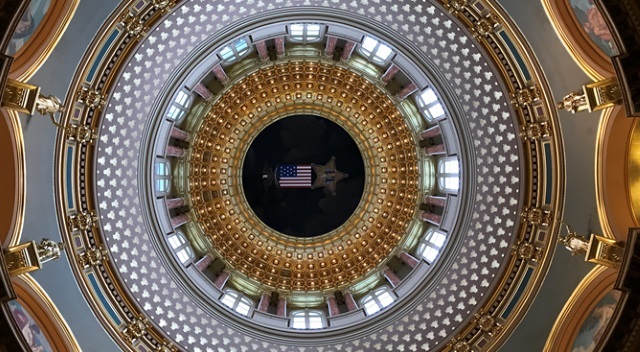
2020 Research in the Capitol
Presentation Type
Open Access Poster Presentation
Keywords
Remote sensing; Image processing;
Abstract
From “multi-” to “hyper-” spectral, remote sensing capacities have improved tremendously in how we measure Earth’s unique signatures. Unfortunately, shadow detection and correction remain an issue in most images, especially those with high spatial resolution. Shadows result when direct sun light is obstructed and the spectral reflectance values for pixels in those regions decrease. Many successful approaches exist to correct this blue skew to shorter wavelengths, but it can be daunting to truly assess which approach to employ since each require different levels of priori knowledge. This research attempts to generate and cross-validate shadow masks using popular GIS software.The goal is to create a tailored method for regions that have access to existing Light Detection and Ranging (LiDAR) data for their study area. The procedure focuses on incorporating two popular methods, histogram thresholding on a linear band algorithm and a model-based method proposed by built from LiDAR. The results include an overall evaluation of shadow range characteristics on the histogram from the newly combined image and crude accuracy assessment of these two methods.
Start Date
24-3-2020 11:00 AM
End Date
24-3-2020 2:30 PM
Event Host
University Honors Programs, Iowa Regent Universities
Faculty Advisor
Bingqing Liang
Department
Department of Geography
Copyright
©2020 Maritza Salinas
File Format
application/pdf
Recommended Citation
Salinas, Maritza, "Unveiling Shadows: How to Optimize Shadow Detection in HSI through Combination of LiDAR and Histogram Thresholding" (2020). Research in the Capitol. 13.
https://scholarworks.uni.edu/rcapitol/2020/all/13
Unveiling Shadows: How to Optimize Shadow Detection in HSI through Combination of LiDAR and Histogram Thresholding
From “multi-” to “hyper-” spectral, remote sensing capacities have improved tremendously in how we measure Earth’s unique signatures. Unfortunately, shadow detection and correction remain an issue in most images, especially those with high spatial resolution. Shadows result when direct sun light is obstructed and the spectral reflectance values for pixels in those regions decrease. Many successful approaches exist to correct this blue skew to shorter wavelengths, but it can be daunting to truly assess which approach to employ since each require different levels of priori knowledge. This research attempts to generate and cross-validate shadow masks using popular GIS software.The goal is to create a tailored method for regions that have access to existing Light Detection and Ranging (LiDAR) data for their study area. The procedure focuses on incorporating two popular methods, histogram thresholding on a linear band algorithm and a model-based method proposed by built from LiDAR. The results include an overall evaluation of shadow range characteristics on the histogram from the newly combined image and crude accuracy assessment of these two methods.



Comments
Summer 2019 REU in Interdisciplinary Research Experience in Hyperspectral Imagining with UNI's geography department.